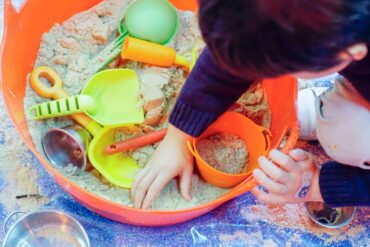A Parent’s Guide to Navigating Petrol Stations with Kids
Hey there, fabulous parents and guardians! Ever find yourself at a petrol station, with your little ones in the backseat, wondering how to juggle filling up the tank while keeping an eye on the kids? Fret not! This sunny guide is here to sprinkle a bit of ease into your petrol station visits. ?
Understanding the Basics of Petrol Stations
First things first, it’s always handy to know what you’re dealing with. Petrol stations are treasure troves of fuel types – unleaded, diesel, premium unleaded, and sometimes even that fancy eco-friendly fuel, LPG or electric charging points for the green at heart. Different cars need different types of fuel – it’s like picking the right type of food for your vehicle!
Types of Fuel and What They Mean for Your Car
- Unleaded Petrol (Regular/E10): This is your standard go-to for most vehicles. E10 means it’s blended with 10% ethanol – a little plant-based cocktail for your car.
- Premium Unleaded (95/98): Think of this as the power smoothie for high-performance engines. It’s got a higher octane rating, meaning it’s a bit more oomph for your automobile.
- Diesel: Got a diesel engine? This is your fuel. It’s thicker and oilier and, fun fact, it has a higher energy content than petrol!
- LPG (Liquefied Petroleum Gas): A clear, odourless option for those cars decked out to run on gas. It’s cleaner burning, so it’s a friend to the environment.
- Electric Charging: Driving the change with an electric vehicle (EV)? You’ll be looking for those stations with charging points to juice up your ride.
Keep it fun and maybe quiz the kids on what type of fuel your family car needs. Education station, right at the pump!
Safe Fueling Practices to Follow with Children
Safety is the name of the game when you’re at the petrol station. You’re handling highly flammable substances, after all! Here are some golden rules to keep your little cherubs safe while you fuel up:
- Never leave children unattended in the car: It might seem like a good idea to dash out to the pump quickly, but it’s best to keep the kiddos within sight.
- Turn off the engine: This isn’t just for safety – it’s also the law. Plus, telling the kids it’s like giving the car a tiny nap might just get a giggle.
- Avoid mobile phones: Hold off on the selfies – sparks and fuel vapors don’t mix. Teach your kids that petrol stations are no-phone zones to prevent any accidents.
- Secure the petrol cap: After refueling, ensure the cap is on tight. It’s a small step, but it’s important for safety and keeping the environment free from fuel vapors.
While these points lay down the essential guidelines, there’s more to discover about keeping your brood secure and incorporating learning into your routine stopovers at the service station. Stay tuned as we power through more tips and fun educational snippets in the upcoming sections. Always remember, each trip to the petrol station can be a smooth ride with just a touch of planning and a sparkle of imagination!
And remember, the next time you pull into that petrol station, you’ve got this! With a few clever tricks up your sleeve, you can turn the mundane task of refueling into a safe and educational experience for your little munchkins. Turn the key, unbuckle those seat belts, and let’s fill up on knowledge together!

5 Essential Things Parents Should Know Before Heading to the Petrol Station
Preparation is key when planning a petrol station visit with your kids. Let’s fuel up on the essentials to make every trip a breeze:
1. Prep Your Car – And Your Kids – Before Leaving
- Check your fuel level before it’s urgent: Running close to empty can lead to rushed decisions. Keep an eye on your petrol gauge to avoid the stress of last-minute fuel stops.
- Familiarize your kids with the rules: Transform car time into a mini-lesson about petrol station safety. Discuss why it’s important to stay seated and keep seatbelts on until it’s safe to exit the car.
2. Equip Yourself with Entertainment and Snacks
- Distraction is a game-changer: A small bag of toys, books, or games can work wonders to keep little hands and minds busy while you focus on filling up.
- Snack attack: A hungry child is a distracted child. A snack bag can keep the grumbles at bay, ensuring they stay seated and satisfied.
3. Choose the Right Time for Your Visit
- Avoid peak hours: If possible, plan your visit during quieter times when the queues are shorter and the station less hectic. You’ll be in and out before anyone can say “petrol”!
- Be fuel smart with a routine: Make petrol stops a part of your regular routine. Familiarity brings comfort, even at the fuel pump!
4. Have a Safety Checklist
- Ready, steady, refuel: Prepare your payment method and loyalty cards in advance to minimize time at the pump.
- Know your emergency procedures: In the rare event of an accident, it’s important to know where the emergency shutoff button is and how to use it.
5. Use Waiting Time Wisely
- Engage in educational activities: Waiting for your turn at the pump can be the perfect opportunity for a spontaneous quiz about cars and fuel.
- Practice observation skills: Ask your kids to notice different cars and their fuel choices, enhancing their understanding of the world around them.
Remember, your petrol station visit doesn’t have to be a drag. With clever planning and a dash of creativity, it can transform into a smooth and educational adventure. Take these tips on board and watch as your trips become refueling missions that the whole family can enjoy. Happy motoring, folks!
For more great fun click here. For more information see here
Disclaimer
The articles available via our website provide general information only and we strongly urge readers to exercise caution and conduct their own thorough research and fact-checking. The information presented should not be taken as absolute truth, and, to the maximum extent permitted by law, we will not be held liable for any inaccuracies or errors in the content. It is essential for individuals to independently verify and validate the information before making any decisions or taking any actions based on the articles.




